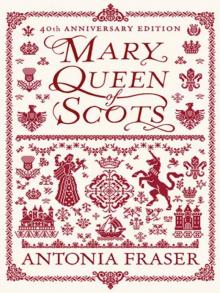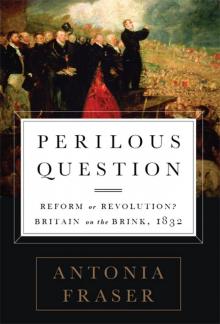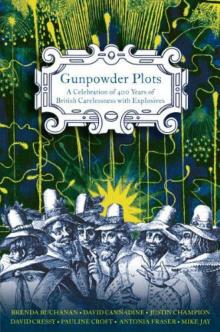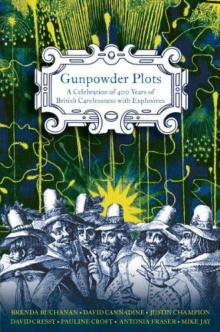- Home
- Antonia Fraser
The Warrior Queens Page 9
The Warrior Queens Read online
Page 9
The temple, erected to the Emperor Claudius at Camulodunum, may have been intended by the Romans to imbue the native Trinovantes with loyalty to their new masters, but that was very far from being the effect it had upon them. On the contrary, the temple appeared, according to Tacitus, as the ‘blatant stronghold of alien rule’. The whole concept of civic monument was alien to Celtic society. Moreover the sylvan temples of the Celtic religion had a very different air. This edifice proposing the godhead of a foreign emperor had nothing sublime about it to the indignant eyes of the Trinovantes. What was more, they were expected to pay for it.
It is not clear exactly how much of the temple of Claudius had already been erected by AD 60, since it is no longer thought that construction was begun during the Emperor’s lifetime.17 It would therefore have been building costs, rather than the maintenance of a priesthood to service the temple, which fell upon the Trinovantes. A series of discoveries, beginning in the late seventeenth century when the existing Norman castle (erected in the eleventh century) was demolished, have, however, given some idea of how the hated temple must have looked.
In 1683 the contractor found vaults below the Norman floor; in 1919 Sir Mortimer Wheeler and P. G. Laver revealed that the castle actually enclosed the podium or platform of the temple; further excavations have followed in 1950 (the 1,900th anniversary of the foundation of the colonia) and 1964. Calculations made from the surviving walls and piers suggest that the temple itself measured some 150 feet by 80 feet, that it was surrounded by a colonnade of columns, thirty-five feet high and over three feet in diameter, and fronted by a sweeping flight of steps where there would have been a series of statues.f118 Enough of this was already completed to provide a clear and imposing focus for the resentful eye: enough, as it turned out, was already completed to provide a target for destruction.
According to Tacitus, the town of Camulodunum gave out its own desperate but unheeded warning of what lay ahead. The portents were many and various. The statue of Victory fell down with its back turned as though it was fleeing the enemy. Outlandish yells were heard in the senate-house and shrieks in the local theatre (the Romans had indeed gone for those amenities which made their civilization so agreeable to them while ignoring the prime need of maintaining walls round the town). A phantom settlement in ruins was glimpsed at the head of the River Thames. Most troubling of all was the blood-red colour of the sea, and the shapes like human corpses found abandoned at the edge of the shore by the ebb-tide.
Gazing on all these things, the native Britons began to hope – and the Roman settlers began to tremble.
Elsewhere in Britain, there were other frenzied women to be found. These women were not merely chanting, they were delivering their chants as war-cries against the Romans. For as the Iceni rose in revolt, led by the outraged Queen, and the subjugated Trinovantes planned to join them, the Governor of Britain, Suetonius Paulinus, was on the faraway island of Mona (Anglesey). Here, in the celebrated sanctuary of the Druids, numbers of rebels against Roman rule had taken refuge. Suetonius’ mission was one of search and destroy. Moreover the destruction was intended to encompass not only the rebels, but also the host of Druids as well.
The scene at Mona is vividly described by Tacitus. The dense armed mass of the enemy confronting the Roman army included ‘black-robed women with dishevelled hair like Furies, brandishing torches’. Close by stood the Druids, ‘raising their hands to heaven and screaming dreadful curses’. For an instant the Roman host stood as if paralysed by the weird spectacle. But then they urged each other, and were indeed urged by Suetonius himself, not to be afraid of a pack of fanatical women.
In that businesslike way which had made their soldiers the disciplined wonder of the world, the Romans bore irresistibly down on the varied multitudes of their opponents. Curses and women’s cries were no match for them. The torches of these Celtic Furies were actually turned against their brandishers. After the assault, in an equally businesslike fashion, Suetonius had the sacred groves of Mona cut down, so that, as Tacitus put it, Mona’s ‘barbarous superstitions’ could no longer be practised; in these Tacitus included the drenching of the altars in the blood of prisoners, and the consulting of the gods by human entrails. From Suetonius’ point of view it had been a highly satisfactory operation. In that military rivalry with Corbulo to which Tacitus attests, he had now surely scored a victory to rank with Corbulo’s conquest of Armenia.
It was at that very moment that the news of the horrifying disaster which had overcome the Roman settlers of the eastern colonia reached him.
Suetonius was by now a man of about sixty. As a veteran commander, he knew how to handle the kind of mountain warfare with which the Welsh terrain confronted him: he had campaigned in the High Atlas mountains.19 He had been Governor of Mauretania, and in a distinguished career had shown himself not only a brilliant general but also an accomplished politician. The question remains as to why, at this combustible moment in the history of the province he had been ruling for the last two years, he found himself at the very limits of his territory: as far from the turbulences in the east as it was possible to be.
Was it a coincidence? Was Suetonius merely led on by his own military ambitions at what proved to be an exceptionally ill-timed moment? Or is there some more sinister – and more exciting – interpretation to be placed upon the fact that Suetonius was besieging the Druid sanctuary at the exact moment that the eastern tribes chose to rebel?
As the priest-class of Celtic society, the Druids were drawn from among the tribal aristocracy.20 The Druids of Gaul in the time of Caesar at least, were believed to constitute an important nationalist focus for their people. Caesar was also convinced – a hundred years before the Boudican revolt – that Druidism was an import from Britain to Gaul, with Druids returning to Britain again in order to refresh their knowledge. Even if the Druids were not as politically influential as was supposed by the Romans, it was this belief which was the important point. At any rate, the Druids were suppressed, either for their ‘barbarous practices’ (the official reason given) or for their political activities.21
What were these barbarous practices? The normal priestly concerns of the Druids were all those of ritual magic, including of course intercession to the gods via animal sacrifice. Gibbon acquitted the Druids of actual human sacrifice, supposing the charge to be a mere excuse for suppressing them on other (political) grounds, and wrote feelingly of the Celtic religion: ‘the deities of a thousand groves and a thousand streams possessed in peace their local and respective influence’.22 But it is generally believed nowadays that the references are too numerous to be ignored; at some point in the past the Druids must have practised it, though it may well have died out by the first century BC.23
Human sacrifice was something from which the Romans shrank in fastidious horror (although the unarmed Christians, matched in the arena against wild beasts for the delectation of the emperor and the Roman crowd, might have found such disgust ironical). The notion of human sacrifice, like the notion of nationalist political influence, combined conveniently to present the image of a body both hateful and threatening and thus ripe for suppression. This is not to dismiss Gibbon’s equally evocative image of tranquil sylvan deities, which may represent another part of the truth.
In the early nineteenth century Gérard de Nerval wrote of the history of the death of religions as being even more terrifying than the history of the fall of great empires: ‘all of us must sometimes tremble to find so many dark gates opening out to nothingness’.24 Certainly to contemplate the Druids themselves in the absence of any literature (non-existent because they were non-literate) is to gaze through a very dark gate indeed. The Classical writers, who must under the circumstances remain our only guides, are not necessarily equipped for the task. To discern actual policy in the disparate actions of a body, whose motives and practices are completely alien, is difficult if not impossible.
Returning to the British Druids of Mona, a hundred years after the time o
f Caesar, they were, according to Tacitus, harbouring rebels at their sanctuary, thus transforming it into a form of political refuge. Does that mean that Druids of first-century Britain were also busily fomenting anti-Roman feelings else-where?25 In short, were the British Druids actually responsible for the coincidence – the planned coincidence – of the East Anglian uprising and Suetonius’ absence in remotest Wales? Tempting as such a theory might be, there is no hard evidence for such a collusion. That might not be relevant if, as was suggested by Sir Cyril Fox, the Druidic hierarchy were busy organizing the gold trade of the Iceni via the sea ports of the Wash.26 Certainly the coastal access of the Iceni, which made their peaceful attitudes interesting to the Romans, is not to be ignored.
In the absence of any proof, however, one is thrown back on the palpable injustices which the Iceni had unquestionably endured, as had the Trinovantes to the south. There was quite enough here to whip up a revolt. It therefore seems more plausible to regard the uprising now led by Boudica as a spontaneous explosion for which there were deep-rooted causes, financial and economic, with a particular incitement of the Iceni arising from the treatment of their queen, rather than something planned or fomented by the Druids of Mona.
If there was a religious dimension to the Boudican revolt – and it seems from Dio’s account of the British behaviour that there was – then it sprang from two sources. One was that natural equation of a popular religion and political resistance which occurs when the religion of the conqueror is markedly different from that of the conquered. (Irish history since 1650, the Catholicism of the people versus the Protestantism of the Ascendancy, is the classic example of this.) Such an equation needed no encouragement from afar. The second source would be Boudica’s own self-identification as a religious figure, whether as priestess, prophetess or even quasi-goddess.
Boudica, according to Dio, addressed her tribe at enormous length on the eve of the rout which would lead them towards Camulodunum. The enunciation of such elaborate orations, if not the common practice of barbarian Warrior Queens (we cannot know), was certainly the common practice of Classical historians, who were accustomed to put these setpieces into the mouths of their characters on appropriately dire, solemn or patriotic occasions. Tacitus gives Boudica his version of a speech both queenly and bellicose at a later point: on the eve of the final battle.
Dio begins his account with that physical description of Boudica quoted earlier, gives her a spear to rattle in her fist (‘to shew herself the more dreadful’, as Holinshed would later have it) and describes her clothing: ‘a tunic of diverse colours over which a thick mantle was fastened with a brooch’. This, he tells us, was her invariable attire. He then elevates her high on a tribunal, the kind of raised platform used by Roman magistrates and generals. The speech which follows has not fared well at the hands of later historians. Milton, in fine misogynist form, sneered at it in his History of Britain. He ran it together with Tacitus’ version and put Boudica, somewhat opprobriously, ‘on a high heap of Turves in a loose-bodied gown [so much for her Celtic dress] declaiming … fondly’, that is, foolishly. ‘A deal of other fondness they [Dio and Tacitus] put into her mouth, not worth recital; how she was lash’d, how her Daughters were hand’d, things worthier silence, retirement, and a Veil, than for a Woman to repeat as done to her own person, or to hear repeated before an host of men.’ Sir Ronald Syme, who otherwise found Dio’s account ‘verbose and miserable’, regarded the speech as ‘a monstrosity’; more recently it has been described as ‘long, not to say exhaustive’.27
Clearly Boudica did not address her tribe in the terms given to us by a second-century Greek, epitomized by an eleventh-century monk and here translated into early-twentieth-century English. But the sentiments she is made to express do at least serve to remind one quite vividly of the recent treatment of the Britons at the hands of the Romans. Boudica talks about the difference between freedom and slavery which they have learned from experience (Tacitus at this point merely has the Britons in general, without mention of Boudica, arguing for freedom over slavery) and touches on their ancestral mode of life, boasting of their hardiness. She points out how the Britons have suffered since the Romans appeared in Britain. ‘Have we not been robbed entirely of most of our possessions, and those the greatest, while for those that remain we pay taxes?’ Although the Britons should rightly have repelled the Romans when they first invaded, it is not too late for them to act now, if only for the sake of their children, lest they too be raised up in bondage.
It is however what Boudica does, rather than what she says, which gives its importance to Dio’s account. For having spoken, the Queen suddenly released a hare from the folds of her dress ‘as a species of divination’. As the hare fled, it was seen by the multitude to run ‘in the auspicious direction’. There were general shouts of delight at what was clearly a favourable omen for the uprising (as it was clearly intended to be, for one imagines that Boudica, astute enough to install the hare, was also astute enough to ensure that it ran in the right direction). The choice of a hare was also deliberate. This is an animal which features mysteriously and excitingly in the mythology of many countries, from the Far East to the pre-conquest inhabitants of North America, and it had been mentioned already by Caesar as among those animals sacred to the Britons. Various traces of hares in outline and other depictions of them as hunted beasts have been preserved; these may well have religious significance.28
Boudica then prayed to a goddess named Andraste (or Andaste in one manuscript). ‘I thank thee, Andraste, and call upon thee as woman speaking to woman.’ Although this is the only specific mention of the name Andraste/Andaste, it may well relate, given the process of translation and epitomization, to that of the goddess of the Vocontii in south-east Gaul, Andarta, and a general British goddess of Victory, mentioned by Dio later, Andate. It could also be some compound derived from Anu, one of the names of the Celtic super-goddess, the mother of all the mothers, as it were. The name is however less important than the type: for while the local Celtic deities have hundreds of names, the types remain consistent. Andraste was presumably the war-goddess of the Iceni. (One goddess portrayed on an Iceni coin ‘with an individuality and a vigour atypical of classical art’ may be intended to depict Andraste.)29
This is not the unique reference to a woman enacting a prophetic role in this period. Tacitus commented that the German tribe ‘traditionally regard many of the female sex as prophetic, and indeed, by excess of superstition, as divine’. About ten years after the Boudican uprising, ‘an unmarried woman’ designated as Veleda (the word in Celtic implies the functions of a prophetess) was described by him as enjoying wide influence over some Rhinelanders called the Bructeri.30 A captured legionary legate, Munius Lupercus, was despatched to her as a gift, although put to death before she could bend him to her purposes, whatever they might have been. Veleda’s prestige was further enhanced when she foretold the massacre of the Roman army at Vetera. Later Veleda was used as an intermediary by the citizens of Cologne. Personal approaches to Veleda, of any sort, were not permitted; her relatives, with the idea of increasing the aura of veneration about her, kept her immured in a high tower, one of their number transmitting questions and answers, ‘as if he were mediating between a god and his worshippers’. Nor did the Romans attempt to dispute her sacred credentials: it seems that when they finally captured Veleda, she was installed in the service of a temple at Ardea.31
Similarly Boudica – whose eventual fate was to be very different – in releasing her hare and issuing her supplication not only associated herself with the goddess, but assumed a composite role of priestess, prophetess and war leader – Holy (Armed) Figurehead – in accordance with Celtic tradition and myth.
So Boudica, Queen and leader of the Iceni, swept down upon hapless Camulodunum in her chariot. She had assembled an initial host of 120,000 according to Dio. It was the apparent suddenness of the attack upon a defenceless city which made it so horrifying in its consequences. But of course
the fact of a British assault should not have come upon the Roman inhabitants so suddenly, just as Camulodunum itself should not have been so defenceless. The suddenness was not so much in the British attack itself, as in the minds of the Romans who faced it.
The Roman veterans, happily enjoying their generous grants of land, including those tracts to which they had helped themselves, must have ignored other signs, which should have been more telling to them than the blood-red sea and the outlandish cries in the theatre. Tacitus mentions the fifth column within the city who made sure that it was not defended properly; but this fifth column (occulti rebellionis conscii, literally ‘secret conspirators in the rebellion’ ) must have consisted of native Trinovantes, whose loyalties, given that they were first dispossessed, then ill-treated, should never have been taken for granted.
To explain the Roman negligence, Donald R. Dudley and Graham Webster, authors of the authoritative study The Rebellion of Boudicca, called attention to ‘that overconfidence that often besets colonial powers’. Writing in 1962, they pointed out that the British had shown an equally negligent attitude towards the Mau Mau tribal insurrection in its first stages, for which oversight an official report had recently criticized the government of Kenya.32 The comparison is certainly a valid one, not only for the tribal–nationalist character of both uprisings. The Roman settlers of Camulodunum, confronted by a series of atrocities apparently totally unheralded, must have experienced something like the same appalled bewilderment as the British settlers of Kenya some nineteen hundred years later.

 Warrior Queens
Warrior Queens The Gunpowder Plot
The Gunpowder Plot Cromwell
Cromwell The Weaker Vessel: Women's Lot in Seventeenth-Century England
The Weaker Vessel: Women's Lot in Seventeenth-Century England Marie Antoinette: The Journey
Marie Antoinette: The Journey Oxford Blood
Oxford Blood Your Royal Hostage
Your Royal Hostage Cool Repentance
Cool Repentance Mary Queen of Scots
Mary Queen of Scots Political Death
Political Death Royal Charles: Charles II and the Restoration
Royal Charles: Charles II and the Restoration My History: A Memoir of Growing Up
My History: A Memoir of Growing Up Perilous Question: Reform or Revolution? Britain on the Brink, 1832
Perilous Question: Reform or Revolution? Britain on the Brink, 1832 Jemima Shore at the Sunny Grave
Jemima Shore at the Sunny Grave A Splash of Red
A Splash of Red Must You Go?: My Life With Harold Pinter
Must You Go?: My Life With Harold Pinter Love and Louis XIV: The Women in the Life of the Sun King
Love and Louis XIV: The Women in the Life of the Sun King The Warrior Queens
The Warrior Queens The Wild Island
The Wild Island Quiet as a Nun
Quiet as a Nun Perilous Question
Perilous Question Cromwell, the Lord Protector
Cromwell, the Lord Protector Gunpowder Plots
Gunpowder Plots The Wild Island - Jemima Shore 02
The Wild Island - Jemima Shore 02 Gunpowder Plots: A Celebration of 400 Years of Bonfire Night
Gunpowder Plots: A Celebration of 400 Years of Bonfire Night Gunpowder Plots_A Celebration of 400 Years of Bonfire Night
Gunpowder Plots_A Celebration of 400 Years of Bonfire Night Marie Antoinette
Marie Antoinette Must You Go?
Must You Go? My History
My History